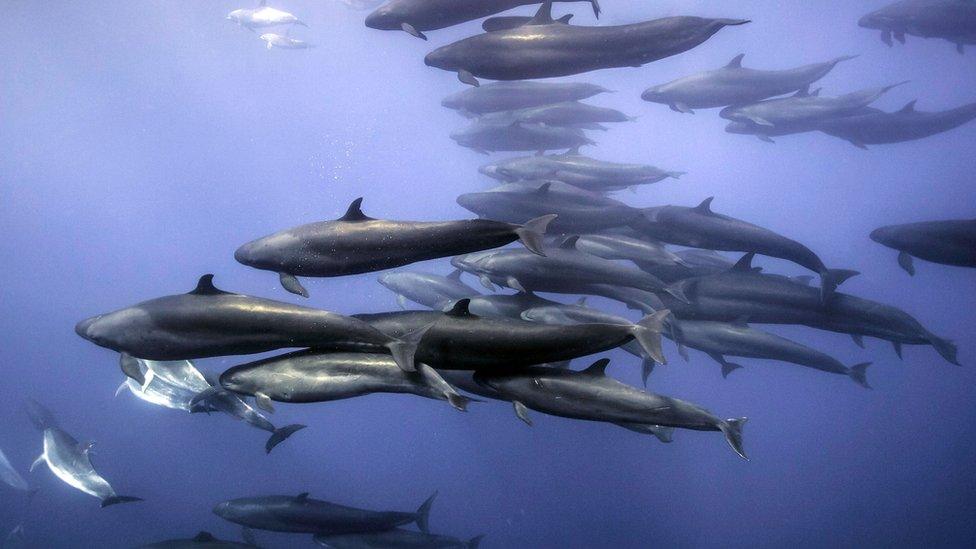Blue Planet II: New pictures from David Attenborough's latest series
- Published

This group of animals is a pod of false killer whales, filmed just off the shore of North Island in New Zealand. You will catch them in episode one!
A little later in the series, Blue Planet II will be looking at amazing wildlife along the world's coasts. As part of this, we will meet Atlantic puffins, like this one who was photographed with a beak-ful of food for its chick on Hornoya Island in Norway.
Very few places on Earth are as colourful as some of the amazing reefs that can be found under the oceans - and Blue Planet will be inviting you to explore these. Here's a sneak peek at a bustling reef in Fiji, which will be featured on the programme.
This cheeky green turtle in Sipadan in Borneo is certainly ready for his close-up! They are named after the colour of their skin and shell.
Macrocystis - also known as giant kelp - can be found all along the west coast of North America. This dramatic plant looks a bit like an underwater forest, especially when sunlight breaks through the kelp canopy, as it is doing in this picture.
Humpback whales are a real favourite for whale watchers because of the acrobatic displays they put on when they come to the surface. One of the most impressive sights is when they feed together, like this group off the coast of Monterey in the US.
This is a venomous Portuguese man-of-war. Lots of people think these are jellyfish, but that's not actually correct. They are what's called siphonophores, which are animals made up of a group of specialised individuals working together. Portuguese man-of-wars are also known as ÔÇśfloating terrorsÔÇÖ as they can move through the water using the wind, trailing their tentacles behind them which can deliver a sting that is extremely painful to humans and can even paralyse fish.
In the second episode, you will be taken deep underwater to see landscapes and animal behaviours that have never been seen before. The Blue Planet II team worked with several submarines to film this special episode, spending a massive 1,000 hours deep beneath the surface of the ocean.
How do you measure the largest fish in the ocean? Well, this is a task that scientists will undertake in episode seven when they measure a whaleshark. They can grow up to 12 metres long and weigh over 20 tonnes, so it's a job for a diver and some fancy lasers, as you can see in this photo.
It's lunchtime for this orange-dotted tuskfish, who is spotted holding a clam in its jaws on the Great Barrier Reef, Australia. We'll be meeting this hungry creature on 29 October, when the new series begins.
- Published30 September 2017
- Published27 September 2017
- Published24 May 2017
